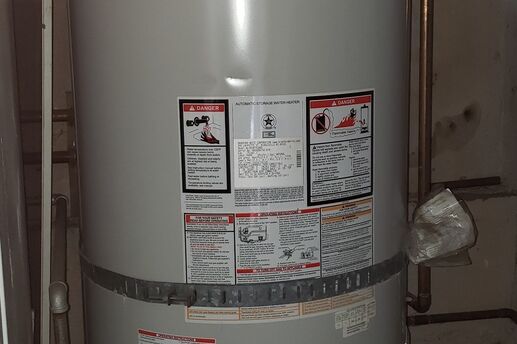Is it Time to Replace Your water Heater?
Almost 15 percent of an average household’s energy consumption can be traced back to the water heater. That's significant, so having an energy-efficient model in your home can make a difference in your quality of life -- and your wallet -- in the long run.
IS IT TIME TO REPLACE YOUR WATER HEATER?
It might be, if you've had it for 8 to 12 years. This estimate varies, however, depending on where you live and the severity of your local weather, your unit’s design, and the quality of installation and maintenance it has received.
Generally, if your water heater is more than 10 years old, leaks around the base of the tank or works erratically or not at all, you should probably replace it.
CHOOSE THE RIGHT WATER HEATER FOR YOUR HOME
When it’s time to replace your water heater, follow these easy steps to take the guesswork out of selecting the right unit for your home.
Step No. 1: Calculate capacity.
For a water heater with a storage tank, compare its first hour rating (the FHR is listed on the yellow EnergyGuide label) to peak demand for the fixtures and appliances it will serve. Here’s how:
- To figure peak demand, use this handy worksheet from the U.S. Department of Energy (DOE).
- Choose a water heater with an FHR within 1 or 2 gallons of your peak demand.
For tankless (demand) water heaters, look at:
- Flow rate Add up the amount of hot water that your fixtures and appliances will draw at the same time, and choose a water heater with the same or a higher flow rate, typically 2 to 5 gallons per minute (gpm).
- Temperature rise is how much the water heater will need to warm incoming groundwater to reach the desired temperature for use. Groundwater that is warmer or cooler than the average of 60 F will influence flow rate.
Step No. 2: Choose the fuel type.
Determine whether you need a gas water heater or an electric one, depending on the fuel source in your home. To compare water heaters, use the estimated annual operating cost on the yellow EnergyGuide label. This number is based on a national average for fuel costs. To refine the estimate, consult your local utilities for fuel costs and use this DOE calculator.
Step No. 3: Factor in efficiency to save money.
The higher the water heater’s energy factor (the EF is listed in the manufacturer and retailer product information), the more efficiently the appliance uses energy. Water heaters with an EnergyStar rating meet or exceed energy-efficiency standards set by the DOE and the U.S. Environmental Protection Agency. These are some of the newest types of energy-efficient water heaters:
- Hybrid water heaters supplement electric heating with a heat pump and can cut energy bills in half. An evaporator and fans on top of the unit pull in ambient air and transfer heat to the water.
- Gas-condensing water heaters capture heat from exhaust fumes and transfer it to the water.
- High-efficiency gas storage heaters offer some energy savings by means of extra insulation, heat traps, efficient burners and perhaps a power vent.
- Tankless (demand) heaters save as much as 30 percent on energy costs by eliminating the standby heat loss of a storage tank. When you turn on the tap, water flows past a heat exchanger and is quickly warmed to a preset temperature.
Step No. 4: Focus on features.
Anything that makes your new water heater safer, easier and more efficient is worth considering. Think about:
- The location and visibility of hookups and controls.
- Multiple settings, such as energy-saving and vacation modes, that can help control energy costs.
- Sealed combustion and power vents that increase safety on gas water heaters.
- Low NOx models that reduce environment-harming emissions from gas water heaters.
Step No. 5: Confirm your choice.
Installation requirements -- such as wiring, venting and clearances -- vary greatly among water heaters. Before you buy, run your top picks by a qualified installer who can verify that they are right for your home and can estimate installation costs.



